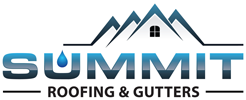In Colorado, homeowners are no strangers to weather challenges. While storms, hail, and snow are often at the forefront of roof maintenance concerns, the silent, insidious effects of intense UV rays on roofing materials are frequently overlooked. This oversight can lead to premature roof damage and costly repairs. Understanding the underlying mechanisms of how UV rays impact roofing materials is essential for homeowners in these areas to protect their homes effectively.

The Hidden Threat of UV Radiation
UV radiation, particularly from the sun, is a pervasive environmental factor that can significantly impact roofing materials over time. Unlike the immediate damage caused by extreme weather events, UV damage is cumulative, subtly degrading roofing materials with continuous exposure. The sun emits UVA, UVB, and UVC rays, with UVA and UVB being the primary culprits of roof damage. These rays penetrate and alter the chemical structure of roofing materials, causing them to dry out, become brittle, and eventually crack. This degradation not only affects the appearance of a roof but also diminishes its protective capabilities, leaving homes vulnerable to water damage.
The Risks Across Different Materials
In the high altitude areas of Summit County Colorado, the summer sun can be particularly harsh, posing a significant risk to all types of roofing materials. Asphalt shingles, widely used due to their affordability and durability, are notably susceptible to UV damage. The intense sunlight can break down the asphalt’s molecular structure, leading to granule loss, cracks, and overall material degradation. Wood shingles, though aesthetically pleasing, are also at risk. UV rays can dry out their essential oils, causing the wood to fade and deteriorate more rapidly. Homeowners should remain vigilant about the type of roofing material they have and the specific risks associated with UV exposure.
Preventing and Mitigating UV Damage
Fortunately, there are proactive steps homeowners in the mentioned cities can take to protect their roofs from UV damage. First and foremost, investing in protective roof coatings can significantly mitigate the effects of UV radiation. These coatings act as a sunscreen for the roof, shielding it from direct sunlight. Additionally, ensuring proper roof ventilation is critical. Proper ventilation helps to keep roof temperatures regulated, reducing the thermal stress that exacerbates UV damage. Regular roof maintenance, including annual inspections, is also crucial. These inspections can identify early signs of UV damage, such as cracking or curling shingles, allowing for prompt repairs before the damage escalates.
The Importance of Professional Guidance
Given the subtlety of UV ray damage and its potential for significant impact, consulting with roofing professionals like Decor Roofing & Restoration is advisable. These experts can provide tailored advice on protective measures, conduct thorough inspections, and perform necessary repairs or replacements with appropriate materials designed to withstand the harsh UV exposure in Oklahoma and Arkansas.
While intense UV rays might not produce immediate, visible damage to roofs, their long-term effects can be just as devastating as any storm. Homeowners in Tulsa, Oklahoma City, Fayetteville, and Fort Smith must recognize this threat and take proactive measures to protect their homes. Through regular maintenance, proper ventilation, and the application of protective coatings, it is possible to extend the lifespan of your roof and ensure it continues to protect your home effectively against all elements, sunlight included.
Protect your roof from the hidden damage of UV rays with Summit Roofing and Gutters. Our team offers expert advice on protective coatings, roof maintenance, and ventilation. Schedule an inspection today to identify any UV damage and ensure your roof’s longevity. Call us at these numbers: (303) 618-4242 (Denver); (970) 390-9623 (Summit County). You can also fill out our contact form to schedule an appointment with us.
